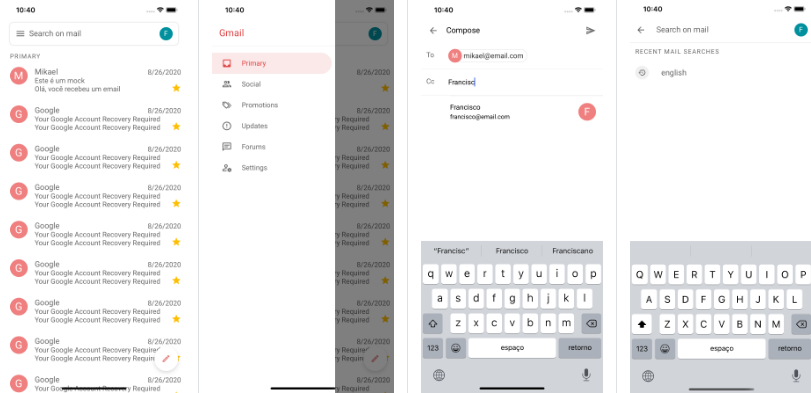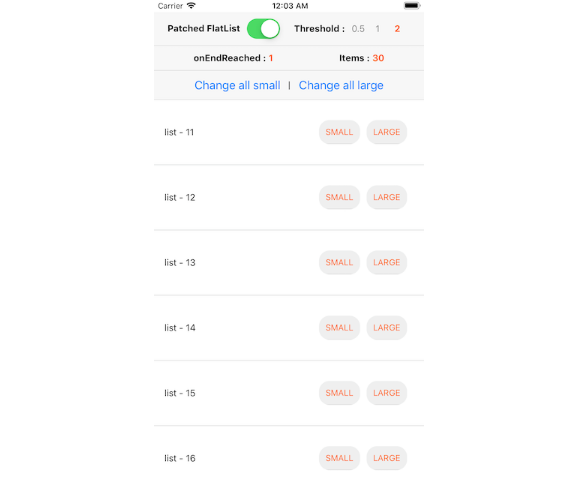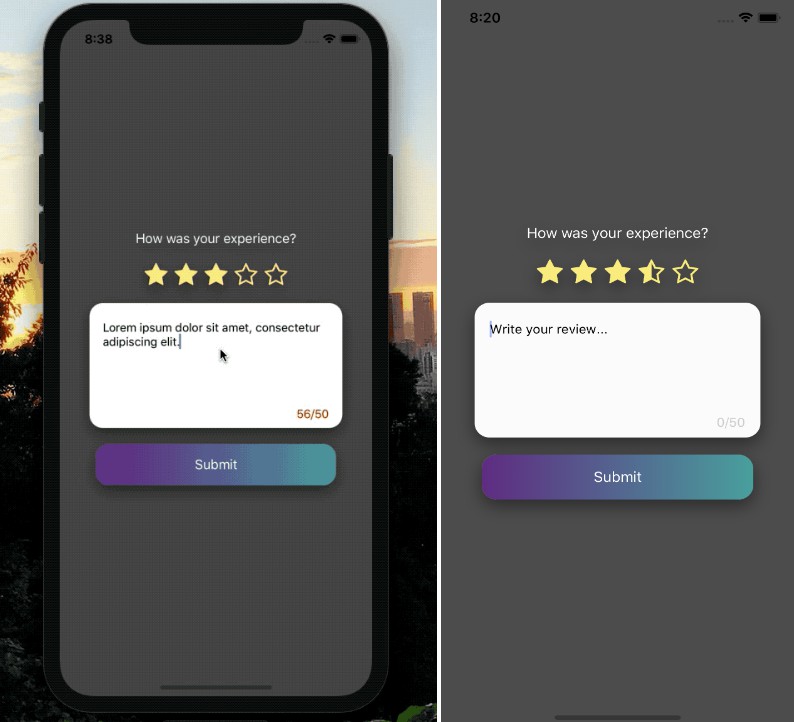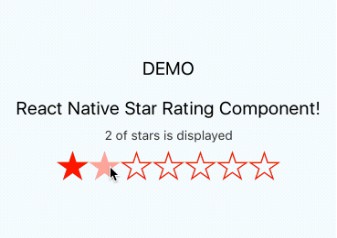react-native-in-app-review
The Google Play In-App Review API, App store rating API lets you prompt users to submit Play Store or App store ratings and reviews without the inconvenience of leaving your app or game.
react native in app review, to rate on Play store, App Store, Generally, the in-app review flow (see figure 1 for play store, figure 2 for ios) can be triggered at any time throughout the user journey of your app. During the flow, the user has the ability to rate your app using the 1 to 5 star system and to add an optional comment for play store only. Once submitted, the review is sent to the Play Store or App store and eventually displayed.
System Rating App Store API
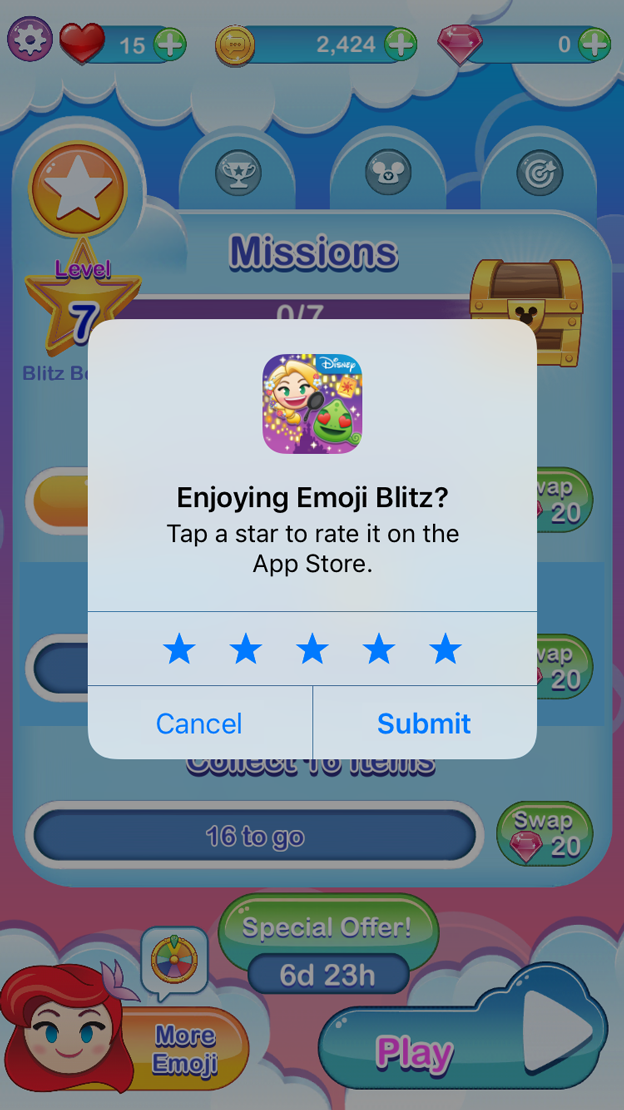
Getting Started
$ npm install react-native-in-app-review
$ yarn add react-native-in-app-review
Standard Method
React Native 0.60 and above
Linking is not required in React Native 0.60 and above.
React Native 0.59 and below
Run react-native link react-native-in-app-review to link the react-native-in-app-review library.
Then follow the instructions for your platform to link react-native-in-app-review into your project:
Manual Linking
iOS installation
iOS details
Using CocoaPods
Add the following to your Podfile and run pod install:
pod 'RNInAppReviewIOS.xcodeproj', :path => '../node_modules/react-native-in-app-review/ios'
Android installation
Android details
Run react-native link react-native-in-app-review to link the react-native-in-app-review library.
android/settings.gradle
include ':react-native-in-app-review'
project(':react-native-in-app-review').projectDir = new File(rootProject.projectDir, '../node_modules/react-native-in-app-review/android')
android/app/build.gradle
From version >= 5.0.0, you have to apply these changes:
dependencies {
...
+ implementation project(':react-native-in-app-review')
}
android/gradle.properties
Migrating to AndroidX (needs version >= 5.0.0):
android.useAndroidX=true
android.enableJetifier=true
Then, in android/app/src/main/java/your/package/MainApplication.java:
On top, where imports are:
import com.ibits.react_native_in_app_review.AppReviewPackage;
@Override
protected List<ReactPackage> getPackages() {
return Arrays.asList(
new MainReactPackage(),
new AppReviewPackage()
);
}
Usage
import InAppReview from "react-native-in-app-review";
// This package is only available on android version >= 21 and iOS >= 10.3
// Give you result if version of device supported to rate app or not!
InAppReview.isAvailable();
// trigger UI InAppreview
InAppReview.RequestInAppReview();
+ Android Notes:
When to request an in-app review
Follow these guidelines to help you decide when to request in-app reviews from users:
- Trigger the in-app review flow after a user has experienced enough of your app or game to provide useful feedback.
- Do not prompt the user excessively for a review. This approach helps minimize user frustration and limit API usage (see the section on quotas).
- Your app should not ask the user any questions before or while presenting the rating button or card, including questions about their opinion (such as “Do you like the app?”) or predictive questions (such as “Would you rate this app 5 stars”).
Quotas
To provide a great user experience, Google Play enforces a quota on how often a user can be shown the review dialog. Because of this, calling a launchReviewFlow method might not always display a dialog. For example, you should not have a call-to-action option (such as a button) to trigger a review as a user might have already hit their quota and the flow won’t be shown, presenting a broken experience to the user.
Device requirements
In-app reviews only work on the following devices:
- Android devices (phones and tablets) running Android 5.0 (API level 21) or higher that have the Google Play Store installed.
- Chrome OS devices that have the Google Play Store installed.
Please Note, To test your integration using the Google Play Store
- In-app reviews require your app to be published in Play Store. However, you can test your integration without publishing your app to production using either internal test tracks or internal app sharing.
+ iOS Notes:
System Rating and Review Prompts
The system offers a consistent, nonintrusive way for apps to request ratings and reviews. To use this feature, you simply identify places in your app's user experience where it makes sense to ask for feedback. If the user hasn't already given feedback, the system displays an in-app prompt that asks for a rating and an optional written review. The user can supply feedback or dismiss the prompt with a single tap. (In Settings, the user can also opt out of receiving these rating prompts for all apps they have installed.) The system automatically limits the display of the prompt to three occurrences per app within a 365-day period.
When to request an in-app-review
-
Ask for a rating only after the user has demonstrated engagement with your app. For example, prompt the user upon the completion of a game level or productivity task. Never ask for a rating on first launch or during onboarding. Allow ample time to form an opinion.
-
Don’t interrupt the user, especially when they’re performing a time-sensitive or stressful task. Look for logical pauses or stopping points, where a rating request makes the most sense.
-
Don’t be a pest. Repeated rating prompts can be irritating, and may even negatively influence the user’s opinion of your app. Allow at least a week or two between rating requests and only prompt again after the user has demonstrated additional engagement with your app.
-
Don't use buttons or other controls to request feedback. Since the system limits how often rating prompts occur, attempting to request feedback in response to a control may result in no rating prompt being displayed.
How to test your code
Because it's a native module, you might need to mock this package to run your tests.
Here is an example for Jest, adapt it to your needs :
// __mocks__/react-native-in-app-review.js
module.exports = {
RequestInAppReview: jest.fn(),
isAvailable: jest.fn(),
// add more methods as needed
};

